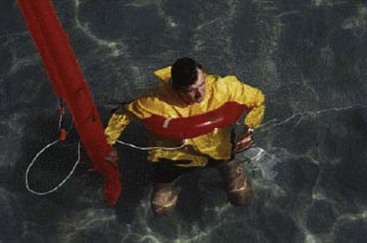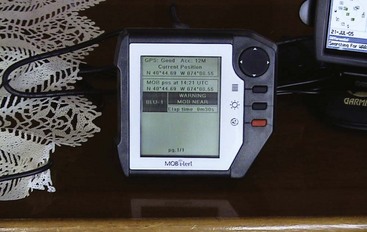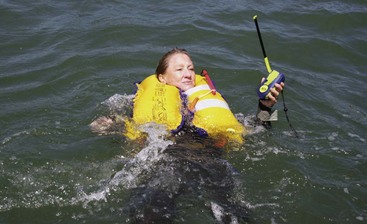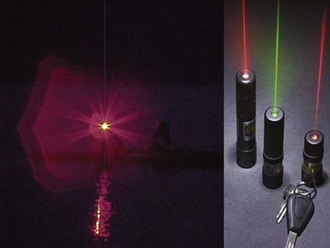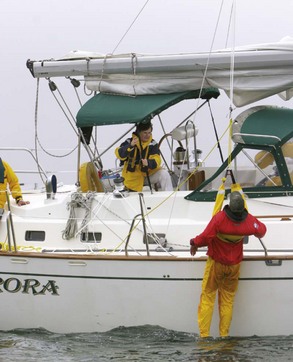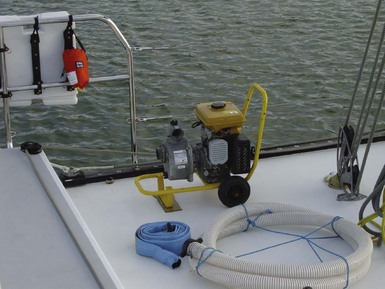Chapter 83 Safety and Survival at Sea
For online-only figures, please go to www.expertconsult.com ![]()
The 1979 Fastnet Race distinguished itself as the worst disaster in the long history of ocean yachting. A surprise killer storm crossed the Irish Sea between southwest England and southern Ireland and exploded without warning in the midst of the Fastnet racing fleet. Suddenly, 2700 men and women in 303 ocean sailing yachts unwittingly became participants in hundreds of incidents of survival at sea. Winds of force 10 (55 knots) with much stronger gusts, and seas as high as 15 m (50 feet) knocked down 48% of the fleet until their masts paralleled the water; 33% of the fleet experienced knockdowns substantially beyond horizontal, including total inversions and full 360° rolls in the case of at least 26 yachts. Despite a massive response of rescue personnel and equipment, 24 yachts were abandoned and five of those sank. Fifteen sailors died and 136 were rescued from disabled yachts or the water. The official Fastnet Race Inquiry noted, “The common link among all 15 deaths was the violence of the sea, an unremitting danger faced by all who sail.” It concluded: “The sea showed that it can be a deadly enemy and that those who go to sea for pleasure must do so in the full knowledge that they may encounter dangers of the highest order.”1 The Fastnet storm had two positive results. Boats, safety gear, and safety procedures were improved dramatically, and sailors began to talk realistically about the risks of sailing and came to regard safety as a necessary discipline. The first public safety at sea seminars were held in Annapolis and New York in the shadow of the Fastnet shock. Since then, hundreds of safety and seamanship seminars have been held across America and in other sailing locations.
Who’s At Risk?
Analysis of U.S. recreational boating accident statistics for 2010, the most recent data available from the Coast Guard in their annual report “Recreational Boating Statistics 2010,” indicates there were 672 boating fatalities in 2010 (736 in 2009). Capsizing and falls overboard from open motor boats, rowboats, canoes, and kayaks accounted for more than one-half of the fatalities. The most common types of vessels involved in open accidents were open motor boats (46%), personal water craft (20%), and cabin motorboats (14%). The Coast Guard Recreational Boating Accident Report Database (BARD) shows an average of 5000 recreational boating accidents annually. Sixty percent of all accidents involve operator and passenger controllable factors, and 25% involve boat or environmental factors. Careless/reckless operation, inattentive and inexperienced boat operators boating at unsafe speeds without proper lookout, and risky passenger/skier behavior cause most fatalities and injuries. Ninety percent of deaths occurred on boats where the operator has received no boating safety instruction. Collision with another boat is responsible for the greatest number of nonfatal injuries. Collision with a fixed object, flooding/swamping, water skier mishaps, and capsizing rank second, third, fouth, and fifth in accident rank, and account for 60% of fatalities. Open motorboats less than 8 m (26 feet) in length and jet-ski personal watercraft (PWC) comprise two-thirds of the water craft involved in collisions, and are the vessel types with the most casualties and deaths. Alcohol is a leading contributing factor in recreational boating fatalities, responsible for at least 20% to 25% of deaths. These statistics indicate that one of the greatest threats to a boater’s safety in “home waters” is the inexperienced operator heading directly toward you at excessive speed, unaware that you are dead ahead. Extra vigilance is required in order to take evasive action to avoid collision. Two-thirds of all fatalities in accidents on sailboats and small nonmotorized craft are from drowning, and 90% of victims are not wearing a lifejacket (see discussion below). Eight out of 10 drowned boaters are from boats less than 6 m (21 feet) long. The full report can be reviewed on line at http://www.uscgboating.org/statistics/accident_statistics.aspx.
Health Issues at Sea
Seasickness
Seasickness impairs cognitive function. Sailors often lose the ability to multitask, making it difficult to analyze and integrate complex data, which leads to impaired judgment and faulty decisions. Cognitive failure is also expressed as loss of short-term memory. This impairment makes it difficult to engage in problem solving. Compounding this problem are the medications used to prevent or treat seasickness. Their side effects may include drowsiness, confusion, and loss of concentration. The underlying mechanism of seasickness involves a conflict of sensory input processed by the brain to orient the body’s position. Someone positioned in the cabin of a heeling or rolling boat is inviting seasickness. Below decks, the eyes oriented to the cabin sole and ceiling detect no tilt from vertical, while fluid in the inner ear’s vestibular system (semicircular canals and the otolith organs) constantly shifts. Position sensors (proprioceptors) in the neck, muscles, and joints send additional signals, depending on how a person shifts and secures him or herself from falling. This mix of sensory data from the eyes, inner ear, and position sensors arrives in complex and conflicting combinations, creating a “sensory conflict” that activates the emetic center in the brainstem. According to Dr. Charles Omen, Director of the Man Vehicle Space Lab at MIT and an authority on motion sickness, sensory conflict is a sensory cue “expectancy” conflict, not an intermodality conflict. It occurs when signals from the inner ear don’t match expectations based on one’s own commanded self movement, or concurrent visual or proprioceptive cues. In response to this “sensory conflict,” there is activation of a complex and not well-understood anatomic connection between the vestibular nuclei in the brainstem, the cerebellum, and the autonomic and emetic centers. Stimuli from the vestibular and visual systems can independently initiate symptoms. Sickness occurs most commonly with acceleration in a direction perpendicular to the longitudinal axis of the body, which is why head movements away from the direction of motion are so provocative. When these stimuli are presented in isolation in the laboratory, visual stimulation is more important than vestibular input in causing motion sickness. There is no increase in symptoms when combined stimulation is applied. Blind people can become seasick; the conflict arises when input from the vestibular system does not match the individual’s expectations derived from previous motion experience. The intensity of conflicting input can be amplified when compared with these expectations. Deaf subjects are susceptible to motion sickness. If the semicircular canals and otolith organs produce sensory cues that are incongruous, seasickness ensues. If the visual system indicates movement but the vestibular system does not (in-flight simulators and movie theaters), motion sickness may ensue. Medication is more effective in preventing symptoms than in reversing them. Therefore, anti-seasickness medication should be administered before leaving port, or the night prior to departure (Table 83-1). One should begin any trip well hydrated and free of the after-effects of alcohol, which impairs vestibular function by sensitizing the vestibular apparatus to motion. One is advised to eat lightly. Anecdotal reports favor eating carbohydrates rather than protein, but no conclusive study favors any particular food or diet. Many sailors favor eating soda crackers or bread. One should try to snack on bland foods throughout the day, even if anorectic, to maintain energy levels until meals are regularly tolerated. Cheese and crackers, energy bars, fruit, trail mix, dry granola, and popcorn work best. Drinking small amounts of fluid frequently is recommended to avoid dehydration. Many sailors believe drinks high in vitamin C prevent seasickness; however, there are no data to support this notion.
| Medication | Dose | Interval |
|---|---|---|
| Diphenhydramine, (Benadryl) (OTC) | 25 or 50 mg tab | 6-8 hr |
| Dimenhydrinate, (Dramamine) (OTC) | 50 or 100 mg tab (max 400 mg/day) | 4-6 hr |
| Meclizine (OTC) | 12.5 or 25 mg tab (max 100 mg/day) | 6-8 hr |
| Bonine (Meclizine) (OTC) | 25 mg chewable tab | 6-8 hr |
| Cinnarizine (Stugeron) | 15 mg tab (max 100 mg/day) | 6-12 hr |
| Scopolamine (Transderm Scōp) | 1.5 mg skin patch | 72 hr |
| (Scopace) | 0.4 mg (max 2.4 mg/day) | 8 hr |
| Promethazine, (Phenergan) | 12.5/25/50-mg tab, suppository, deep IM injection | variable intervals, depending on dose/preparation |
The antihistamines meclizine (Bonine) and dimenhydrinate (Dramamine) are available over the counter (OTC) without prescription. They are effective for many sailors, as are the other prescription medications listed in Table 83-1. The popular antihistamine cinnarizine (Stugeron) is not sold in the United States, but is available OTC in Europe, Bermuda, Mexico, and Canada. It can be obtained legally from http://www.canadadrugsonline.com. It is favored by many sailors because it is less sedating than all the other antihistamines and has fewer reported side effects (described below).
Health Maintenance at Sea
Fahrenheit
Hypothermia (see Chapters 5 and 6) may develop acutely when someone is suddenly immersed in cold water, or over a period of hours to days during prolonged exposure to the elements. Mild hypothermia, defined as a core temperature above 32° C (90° F), is the only level that can be treated aboard a boat. Deeper levels require evacuation to a medical facility. Sustained uncontrollable shivering is the most reliable and earliest sign of a drop in core temperature. Other early clues are alterations in motor skills and changes in mental status. As blood is diverted from the muscles and nerves, there is loss of manual dexterity, large muscle coordination, and strength. Clumsiness while performing simple tasks, such as adjusting binoculars or using navigational instruments, is apparent. Walking safely on deck and working with lines and gear becomes hazardous. Subtle changes in mental status cause impaired judgment, confusion, and disorientation. There are changes in personality and frequent errors in judgment. Initial treatment of a fully conscious and shivering mildly hypothermic person with a core temperature above 32° C (90° F) is to prevent further cooling and heat loss. The person is still capable of rewarming him or herself and does not require evacuation. Shelter the victim from wind and water. Replace wet clothing with multiple layers of dry insulating garments after the skin is completely dried. If dry clothing is not available, provide an extra vapor barrier with added foul weather gear. A windproof layer minimizes convective and evaporative heat loss. When practical, wrap the victim in blankets, sleeping bag, sails, or sail bags. Provide calories with simple carbohydrate foods and sweet liquid drinks, and allow vigorous shivering to continue in order to generate rewarming heat. Warm liquids are psychologically beneficial but will not influence rewarming rates.
Gear and Equipment
Life Jackets
Inflatable vests have a flat and lightweight design that allows them to lie flush against the body so they do not restrict movement. They have excellent wearability and superb flotation capabilities. The vests provide as much as 16 kg or 150 newtons (35 lb) of buoyancy, compared with 10 kg (22.5 lb) in type I and 7 kg (15.5 lb) in types II and III. In most cases, added buoyancy enables the person to float higher, making it easier to breathe, and reduces the risk of aspirating seawater in rough sea conditions. By keeping the head and chest higher out of the water, it is easier to adopt the heat escape lessening position (HELP) (see Chapter 75). With buoyancy high on the chest, there is also better righting ability and head support. The offshore model can be purchased with an integrated safety harness (Figure 83-1).
Emergencies at Sea
Crew Overboard
Remaining Aboard
Recovery of Crew Overboard
Special equipment designed for locating and retrieving a person overboard should be deployed immediately. This gear should be ready for easy deployment and must release instantly. Too often, the gear is protected against accidental loss by extra wraps of line to the stern pulpit or rigging. Any delay in releasing COB gear will leave it too far from the victim. A crew overboard pole is a 4- to 5-m (12- to 15-foot) floating flagpole that is ballasted to remain upright in rough seas. Without the drogue accessory (a parachute-shaped device to slow a vessel’s drift downwind), it will quickly drift away from the designated area. A man overboard module (MOM) automatically deploys a CO2-activated horseshoe buoy and a 2-m (6-foot) inflatable locator pole equipped with a drogue and water-activated, lithium-powered light (Figure 83-2). A variety of lights have been developed to serve as rescue beacons. The overboard marker strobe marks the site and illuminates the scene for the rescuers. It automatically activates when thrown into the water. Waterproof personal rescue strobe lights attached to a life jacket can flash for 8 hours at 1-second intervals and are visible a mile away. Other personal strobe lights can last up to 60 hours, with variable rates to conserve battery power. A U.S. Navy whistle has a special flat design to prevent the whistle body from holding water and dampening the sound. Attach one to every life jacket.
Electronic overboard alarms are available for crew; these are small transmitters alerting the mother ship receiver. The personal alarms are activated when they contact the water or when manually turned on (Figure 83-3, online). All onboard GPS units have a MOB function, which, if activated, will create a waypoint at the vessel’s position when pressed. It will also make the waypoint “active,” so the vessel can return to the latitude and longitude of the person at the time of the fall. The GPS is a powerful search and rescue tool, but is not a substitute for maintaining strict visual contact and using signal lights and markers. The inherent small degree of error with GPS in marking the waypoint of the MOB is magnified in heavy winds, large seas, and strong currents, because the person may drift downwind or down-current while the boat returns to the scene. GPS receivers receive signals from U.S. Air Force satellites and then compute the location accurately to within 10 m. It may still be impossible to locate the person in rough seas or during reduced visibility.
Rather than rely on the ship’s emergency locator beacon, sailors can wear them on their person. A small unit can be worn (on a life jacket) by a crew member as a personal locator beacon (PLB). Weighing as little as 500 mL (1 pint), and not much larger than a cell phone, it also transmits on the 406- and 121.5-MHz frequencies. The battery life for this compact unit exceeds 24 hours. PLBs do not float upright in the transmitting position. The transmitter requires manual activation and must be held out of the water with the antenna pointed skyward (Figure 83-4). It would be difficult to do this without wearing a life jacket. Some units have an integrated GPS to yield location accuracy to within less than a 91-m (300-foot) radius, versus a 5-km (3-mile) radius from the 406-MHz beacon operating alone. The problem is that most boats, other than professional rescue vessels [or SAR aircraft], are not equipped with a receiver capable of locating the source of the “homer” beacon on the PLB. All PLBs require registration with NOAA. A less technical signaling device designed for night use is the Rescue Laser Flare. This is a handheld light that produces a visible line of laser beam to attract the attention of search boats and aircraft within a 10- to 20-mile radius (Figure 83-5, online).
Crew Overboard Maneuvers
The goal is to have the MOB back on the boat as quickly as possible. Practice the different techniques and decide which method and modifications work most effectively. The Lifesling, developed to enable one person to retrieve a person overboard, is a flexible floating collar that doubles as a hoisting sling (Figure 83-6, online). Deploy the collar from the stern pulpit and deliver it by repeatedly circling the victim, much as a ski boat maneuvers to deliver the towrope to a fallen water skier. After securing the horseshoe over the head and under the arms, pull the victim back to the boat and hoist him or her in the apparatus with the assistance of a halyard and winch (Figure 83-7). Lifelines are an obstacle to bringing the MOB back on deck, but are an important source of protection for the remaining crew. You may elect to secure lifelines at the stern (or transom) with lashing rather than shackles or pins so they can be easily cut and released in a recovery should the need arise.
If the crew has lost sight of the victim, immediately call for assistance. A mayday call on VHF-FM channel 16 will notify the Coast Guard and simultaneously alert all ships in the area monitoring this channel. The last known position should be obtained using GPS or reference to any navigational buoys and landmarks on shore. Rescuers should perform repeat searches of the area, because it is easy to miss someone in poor visibility or choppy seas. The victim will be far more likely to be located if he has the correct gear. Ideally, this includes a high-visibility (orange or yellow) life jacket with reflective tape combined with a safety harness, personal strobe light, loud whistle, packet of waterproof self-launching meteor flares, fluorescent dye marker, and a PLB or other crew-overboard alarm. Perhaps the most important factors for a successful rescue are the crew’s familiarity with the boat and the MOB equipment, and their teamwork, leadership, and expertise developed from practicing the maneuvers. A full review of the 2005 Crew Overboard Rescue Symposium conducted on San Francisco Bay can be found at http://www.boatus.com/foundation/findings/COBfinalreport. This study reviews the challenges for a successful recovery, required skills of the crew, preferred recovery maneuvers, and equipment that can be helpful in locating and retrieving the victim. It is a “must” read for every boater. It is also available in a slightly different format from U.S. Sailing on the website http://www.ussailing.org/safety/Studies/COB.pdf.
Flooding
Flooding, and the potential for sinking, is a threat to every boater. Boat U.S. Marine Insurance examined 50 claims from recreational boats that sank while underway, ranging from a tiny personal watercraft to a 16.5-m (54-foot) ocean-going sailboat. The full report is on the website at http://www.boatus.com/foundation/guide/index.html. Thirty-four percent of the boats sank because of leaks at thru-hulls, outdrive boots, or the raw water cooling system/exhaust. The single most critical reason small motorboats flood in open water relates to transom height. Engine cut-outs may be only inches above the waves, and the motor well may not protect the cockpit. Often, weight distribution of passengers and gear to the stern contributes to the problem.
Flooding may occur from failure of systems or construction (6% of the boats sank after coming down hard off of waves and therefore splitting open), or structural damage from collision and extreme weather (Box 83-1). Before abandoning ship, quickly assess the damage. The limiting factor is time. Stock the proper tools and repair supplies in a damage control kit (Box 83-2), and know how to respond quickly and skillfully. Assign duties to the crew before departure so that they know what to do in the event of flooding (and crew overboard, fire, grounding, and dismasting). Duties include damage control, radio transmission of a Mayday (can be cancelled later if necessary), and preparation to abandon ship.
BOX 83-1 Sources of Flooding
Reliable bilge pumps are the best defense against flooding (Figure 83-8, online). An excellent pump can buy time for locating and plugging the leak. However, no pump, manual or electric, can keep up with even a modest-sized hull breach. If a boat is equipped with an automatic bilge pump (or pumps), install a cycle counter on the pump and an “on” light to alert the crew when the pump is activated. A second emergency pump mounted above the first, using a separate float switch, can provide added pumping capability if the first pump cannot keep up with the leak. In this case, an alarm installed in the circuit can alert the crew to flooding.
Large holes can be overlaid with a collision mat (Figure 83-9) placed outside the hull to supplement a temporary interior patch (see below). The mat is a piece of heavy canvas or vinyl-coated fabric with grommets and lines that enable it to be positioned and secured on the exterior surface. It is held in place by pressure and lines. Collision mats can be purchased or improvised by using a small sail or awning material, although it is a mistake to make the mat too large; generally 1.2 m (4 feet) on an edge of the triangular shape is adequate. The water pressure automatically spreads the patch over the hole to form an effective seal and holds it in place. A commercial hull repair kit features flexible oval concave sheet metal plates with rubber gaskets. A bolt is welded to the intended exterior piece. The idea is to slip one oval through the hull breach, then back it from the inside with the second metal plate and tighten both together with a thumbscrew.

FIGURE 83-9 Triangular patches made from coated fabrics can be held in place with lines attached to each corner.
If flooding and sinking are inevitable, the captain should consider running the boat onto shore.


